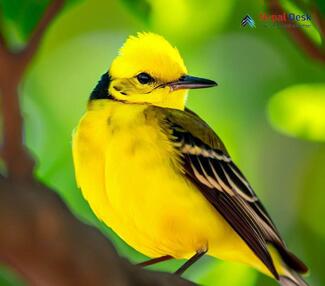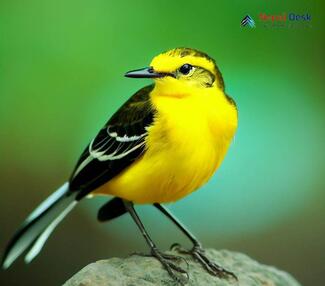The Citrine Wagtail (Motacilla citreola) is a charming little songbird belonging to the Motacillidae family. Its name is derived from its distinct yellowish hue, with 'citrine' and 'citreola' both referring to its lemon-yellow coloration. The word 'Motacilla' comes from Latin – although originally a diminutive term for 'motion', it was misinterpreted during medieval times as meaning 'tail.' The term 'citreola,' on the other hand, means 'lemon yellow' in Latin. This beautiful bird has been a subject of considerable debate among scientists in the early 21st century as its systematics, phylogeny, and taxonomy are complex. This complexity arises because the Citrine Wagtail forms a cryptic species group alongside the Eastern Yellow Wagtail (M. tschutschensis) and Western Yellow Wagtail (M. flava).
Now, Let's embark on an exploration of this enchanting and captivating bird, from its striking appearance to its intriguing behavior, under below mentioned topics:
The Allure of the Citrine Wagtail
The Citrine Wagtail derives its name from its eye-catching plumage. The male sports a vibrant yellow hue on its head, chest, and underparts during the breeding season, making it an absolute treat to spot. In contrast, the female and juvenile birds display a subtler yellowish tint, although still no less stunning. This small passerine bird typically measures around 16-19 cm in length. With a slender body and an agile demeanor, it gracefully flits across fields and wetlands in search of insects to feast upon.
Natural Habitat and Distribution
Citrine Wagtails primarily inhabit wet meadows, marshes, and riverbanks throughout Asia. Nesting close to freshwater sources, these charming birds can be found from western Alaska all the way to Nepal's captivating landscapes. Although not as frequently sighted compared to other local bird species in Nepal, spotting the Citrine Wagtail during migration season is truly an unforgettable experience for birdwatchers. In Nepal specifically, they are often observed in places such as Chitwan National Park, Koshi Tappu Wildlife Reserve, and various wetlands across the country.
Conservation Status: A Message of Hope
Despite habitat loss due to urbanization and agricultural expansion posing as potential threats to the Citrine Wagtail population in some regions, this resilient bird is fortunately classified as ‘Least Concern’ by IUCN Red List. With ongoing conservation efforts in place to help preserve wetland habitats, these beautiful birds can continue to grace our world with their awe-inspiring presence.
To Conclude: A Treasure Worth Seeking
Whether you are a seasoned birdwatcher or a casual nature enthusiast, encountering the Citrine Wagtail in its natural habitat is an enchanting experience. Its vivacious appearance and playful behavior make the sight incredibly exhilarating, and a testament to Nepal's incredible biodiversity. Remember, no wildlife adventure in Nepal is complete without the possibility of glimpsing this rare gem of the birding world – the Citrine Wagtail.




